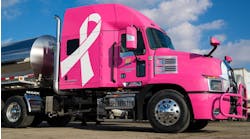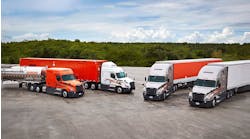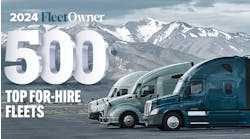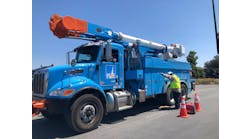While their primary business is not freight, private fleets are essential to the trucking industry. Some 200,000 companies operate private fleets in the U.S., according to the annual benchmarking survey from the National Private Truck Council (NPTC). These fleets account for 67% of the outbound freight and have a U.S. Dept. of Transportation recordable crash rate of 0.46 per 1 million miles driven.
Check out the Top 101-200 private fleets in the United States and Canada in 2020.
For the 17th year, FleetOwner has ranked the top 500 private fleets based on the number of trucks and tractors they operate while also identifying the industries they serve. The list is based on a FleetSeek database that’s continuously updated through a variety of channels to create the most up-to-date list possible. The data is current as of Dec. 31, 2019.
Private fleets tend to pay drivers more and have lower turnover rates than other carriers, a benefit in these days of projected driver shortages. While a shortage of qualified drivers remains a top concern for private fleets, average salaries in 2019 were $69,964, an increase of more than $2,000 from 2018. With higher pay on average, private fleets have a lower turnover rate than other industry segments. In 2019, private fleets saw a 16.9% average turnover rate — up from 15.4% in 2018 — that NPTC attributes more to retirements in an aging workforce.
Private fleets are also relying more on technology inside and outside of their assets. According to an NPTC survey, 93% of fleet respondents are using back-office technology; five years ago, it was just 56%.
Surveyed private fleets reported using more safety technologies in 2019 than in 2018: More than half (51%) are now using cameras, compared to 44% the year before. Nearly two-thirds of those fleets use both inward- and outward-facing cameras.
Additionally, 89% of private fleets are involved in “green” initiatives. That number is the highest it has been since NPTC started asking the question. The most popular environmental initiatives for private fleets are speed governance, anti-idling, and trailer skirts, all three of which are used by more than half of the private fleets surveyed.
Last year also saw private fleets keeping their equipment turns steady. The average trade cycle of Class 8 heavy-duty tractors increased to 6.5 years from last year’s 6.4 years. Additionally, the overall trade mileage dropped to 630,000 miles from last year’s reported average of 651,000 miles. Four years ago, the average surveyed private fleet’s vehicle life cycle was 8.7 years and 713,900 miles. NPTC said the reliance on a peppier replacement cycle provides increased technology adoption and improved fuel economy, as well as operating and customer service advantages to fleets.
“These fleets measure key performance indicators and best practices typically used by successful private fleets operating at or near world-class standards and are from a representative cross-section of industries, business sectors, and customer markets throughout the U.S.,” said NPTC President Gary Petty. “Companies with private fleets benefit from constant reminders to senior executives that outsourcing their private fleet can be a perilous option, which, especially in this extreme market, could result in prohibitively expensive transportation costs, a decline in customer service, and the risk of business loss.”









